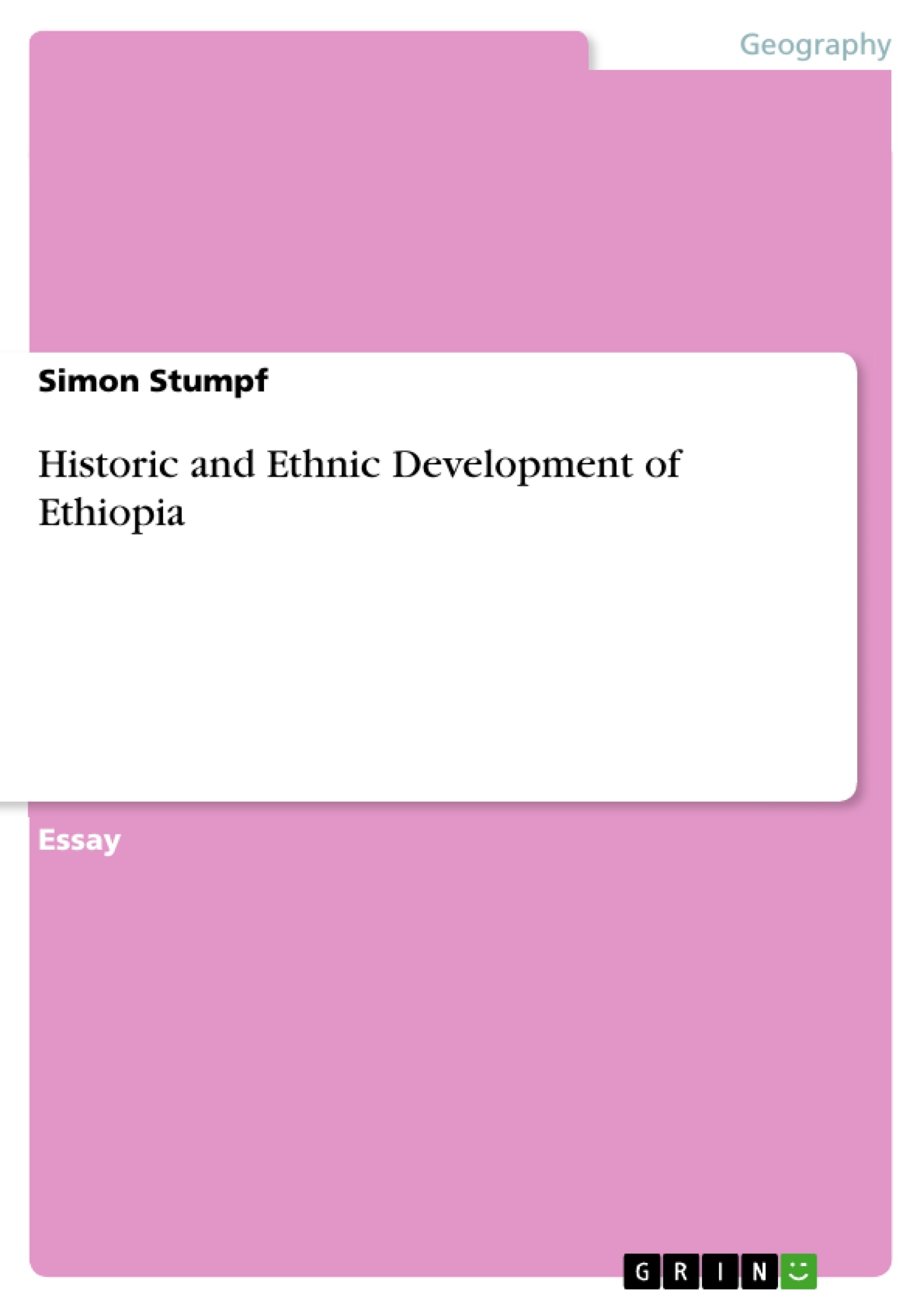Regarding the history of african nations, Ethiopia is commonly considered as one of the most unique countries of Africa. One of the reasons for its originality and cultural richness is the fact that Ehtiopia, during his long history as a sovereign state has never been colonized by any of the European powers. But nowadays in the western world Ethiopia is unfortunately rather associated with naturals disasters and wars. Most of these wars, which constitute the main cleavage lines of inner-ethiopian conflicts were fought among ethnic groups. To have a better understanding of those conflicts as well as towards a better understanding of the current demographic dynamics it could be very helpful to have a brief look at Ethiopian history. In order to describe the main turning points of Ethiopia's rich history we should have an idea about its ethnic development. Following that question this presentation is divided in four chapters which also generally mark the four main sections of Ethiopian history: the kingdom of Axum, the modernisation from Emperor Theodore to Emperor Haile Selassie, the marxist period under Haile Mengistu and finally the current situation since 1991.
Inhaltsverzeichnis (Table of Contents)
- Introduction
- Historical and ethnic roots of the Ethiopian population
- Ethiopias Path to modernization
- The Ethiopian revolution and its impacts on ethnic groups
- Current demographical situation
Zielsetzung und Themenschwerpunkte (Objectives and Key Themes)
The presentation aims to provide a comprehensive overview of Ethiopia's rich history and its impact on the country's ethnic development. It seeks to understand the main turning points of Ethiopia's past, focusing on the four main sections of its history: the kingdom of Axum, the modernization period, the Marxist period, and the current situation since 1991. The presentation also aims to shed light on the interconnections between Ethiopian history and the ethnic conflicts that continue to shape the country.
- The impact of historical events on the ethnic makeup of Ethiopia
- The role of colonialism and modernization in shaping ethnic relations
- The development of ethnic conflicts and their roots in historical power dynamics
- The influence of political and economic factors on ethnic tensions
- The significance of understanding historical context for comprehending contemporary ethnic relations
Zusammenfassung der Kapitel (Chapter Summaries)
- The first chapter explores the historical and ethnic roots of the Ethiopian population, focusing on the establishment of the Axumite Empire and its cultural synthesis. It examines the influence of Arab migration, the rise of Islam, and the impact of the Oromo migration on Ethiopia's ethnic landscape. The chapter highlights the long-standing rivalry between the Amhara and Tigray peoples and the contrast between settled and nomadic cultures.
- The second chapter examines Ethiopia's path to modernization, beginning with the reign of Emperor Theodore II and the re-centralization of the Ethiopian state. It discusses the challenges of suppressing regional ethnies and the emergence of external threats from European powers. The chapter also analyzes the impact of Emperor Menelik II's expansion of the empire and the rise of Addis Abeba as the capital. Finally, it explores Emperor Haile Selassie's attempts to limit the influence of feudalism and the subsequent uprisings by various ethnic groups.
- The third chapter focuses on the Ethiopian revolution and its impact on ethnic groups. It examines the social and political contrasts that led to the revolutionary movement, the land reform policies implemented by the new government, and the intensification of regional conflicts. The chapter also explores the changing nature of ethnic conflicts and the growing expectations for more rights and political participation from different ethnic groups.
Schlüsselwörter (Keywords)
Key keywords and focus topics of the text include: Ethiopian history, ethnic development, Axumite Empire, Arab migration, Oromo migration, Amhara, Tigray, modernization, colonialism, feudalism, Emperor Theodore II, Emperor Menelik II, Emperor Haile Selassie, Ethiopian revolution, land reform, ethnic conflicts, political participation.
- Quote paper
- M.A. pol. Simon Stumpf (Author), 2002, Historic and Ethnic Development of Ethiopia, Munich, GRIN Verlag, https://www.grin.com/document/61588



